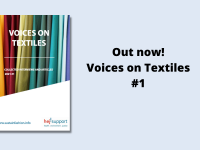Fast Fashion and its Impact on the Environment

Fast fashion refers to the unsustainable practice of producing usually inexpensive garments in high volumes at a rapid pace to satisfy the latest catwalk and seasonal fashion trends. Popular companies which actively practice this include Zara, H&M and Topshop. With the growing use of social media, the marketing and reach of fast fashion is even more advertised, amplified and available to the consumer population.
The fast fashion industry lies on two pillars:
- The first pillar involves taking designer pieces and creating cheaper models and similar versions.
- The second pillar involves the process referred to as “dynamic assortment”, in which the company creates new products every day. The Inditex company, which is the holding company for Zara, has stated in its 2018 annual report that it had produced 1,597,260,495 pieces of garments and retailed them in 7,490 stores.
The video entitled The Ugly Truth of Fast Fashion-Patriot Act with Hasan Minhaj exposes the damaging consequences of the fast fashion industry. The devastatingly poor working conditions of industry workers, the vast amount of pollution and the overuse of water and other resources are only a few of the negative impacts involved in the industry. It is already known that the textile industry in itself contributes heavily to pollution due to the use of chemicals in production and across the lifecycle. These chemicals pollute water sources waters, soil and air causing serious damage to environmental and human health. End-of-life pathways for clothing waste are also a significant problem as 87% of waste ends up in landfills or incinerated.
Another problematic issue is the ongoing green-washing concerns inflicted on stakeholders and consumers by falsely made branding claims. Indeed, brands such as an H&M or Zara are unfortunately misinforming consumers regarding their environmentally-friendly self-claimed standards and other motivations. For example, H&M has a recycling program which provides customers engaging in the program a store discount; the objective is to recycle 10% of the clothes collected, which at first may seem like a sustainable initiative but on closer inspection proves to be quite misleading. Furthermore, H&M and Zara both have eco-friendly lines which provide false claims of their environmental impact.
In the aforementioned video, host Hasan Minhaj encouraged the public to use their clothing for longer periods of time or opt to buy secondhand. By adopting such small and simple habits, we have the power to make immense positive changes.






